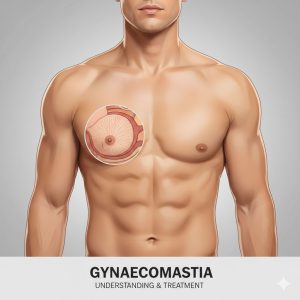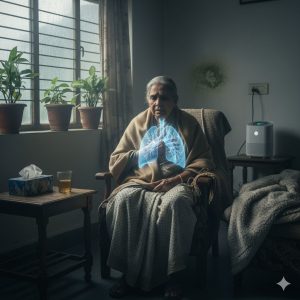- What Is SLNB and Why Is It Important?
Sentinel Lymph Node Biopsy (SLNB) is a minimally invasive surgical procedure used to check if breast cancer has started to spread to nearby lymph nodes—specifically those under the armpit (axillary nodes). These are typically the first nodes to which cancer cells travel. By examining just these key nodes, doctors can determine the extent of spread without having to remove a large number of lymph nodes. If the sentinel nodes are cancer-free, further dissection is often unnecessary.
2. When and for Whom Is SLNB Recommended?
SLNB is the standard of care for axillary staging in early-stage invasive breast cancer, especially in patients with no clinically palpable lymph node involvement. It is also used selectively for:
Ductal carcinoma in situ (DCIS) when a mastectomy is planned
Node negative breast cancer after neoadjuvant therapy
However, SLNB is generally not recommended in cases of clinically positive nodes, inflammatory breast cancer, or significant prior axillary surgery.
3. How Is the Procedure Performed?
SLNB is typically scheduled alongside tumor removal surgery, but can also be done before or afterward:
A tracer—a radioactive substance, a blue dye, or indocyanine green —is injected around nipple areole complex or around the tumor.
The tracer travels through lymphatic channels to identify the sentinel nodes.
During surgery, the surgeon uses a detector (for radioactivity) or visual cues (blue-stained nodes) or a special camera to locate and remove these nodes.
4. Benefits Over Traditional Axillary Dissection
SLNB offers significant advantages compared to full axillary lymph node dissection (ALND):
Lower risk of lymphedema (about 5–7% vs. 20–30%)
Reduced sensory pain, stiffness, and numbness in the arm
Shorter hospitalization and faster return to daily life
Equivalent survival and disease recurrence outcomes in appropriately selected patients
Landmark trials, including those supported by the National Cancer Institute, have shown no significant difference in overall or disease-free survival when SLNB alone is used in early-stage breast cancer with negative nodes.
5. Potential Risks and Limitations
SLNB is generally safe but not without risks:
Lymphedema, though rare, can still occur
Allergic reactions to dyes or tracers (rare)
Bleeding, infection, or seroma at the surgical site
False negatives, where cancer is missed in other nodes
Temporary skin discoloration or numbness may occur
6. Implications of SLNB Results
Negative SLNB → No further lymph node surgery required.
Positive SLNB → Treatment may include full ALND (depending on patient specifics) or may be managed without, especially if only 1–2 nodes are involved and the patient is receiving breast-conserving therapy with radiation.
7. Patient Experience and Recovery
The tracer injection may cause mild discomfort, often mitigated with local anesthesia. The level of pain is usually minimal.
Most patients can go home the same day or soon after surgery, with a quick return to normal activities.
SLNB also provides emotional reassurance by minimizing surgical trauma while enabling precise cancer staging.
Conclusion: Why SLNB Matters
Sentinel Lymph Node Biopsy represents a leap forward in breast cancer care: precise, effective, and kinder to the body. It empowers an individualized approach—only the necessary nodes are removed, sparing many from more invasive surgery and its lasting side effects. With equivalent outcomes and improved quality of life, SLNB continues to be a vital tool in breast cancer management.

Dr. Santhoshkumar Bandegudda
MBBS, MS, DrNB (Surgical Oncology), FMAS, FIAGES
Consultant – Surgical Oncology














